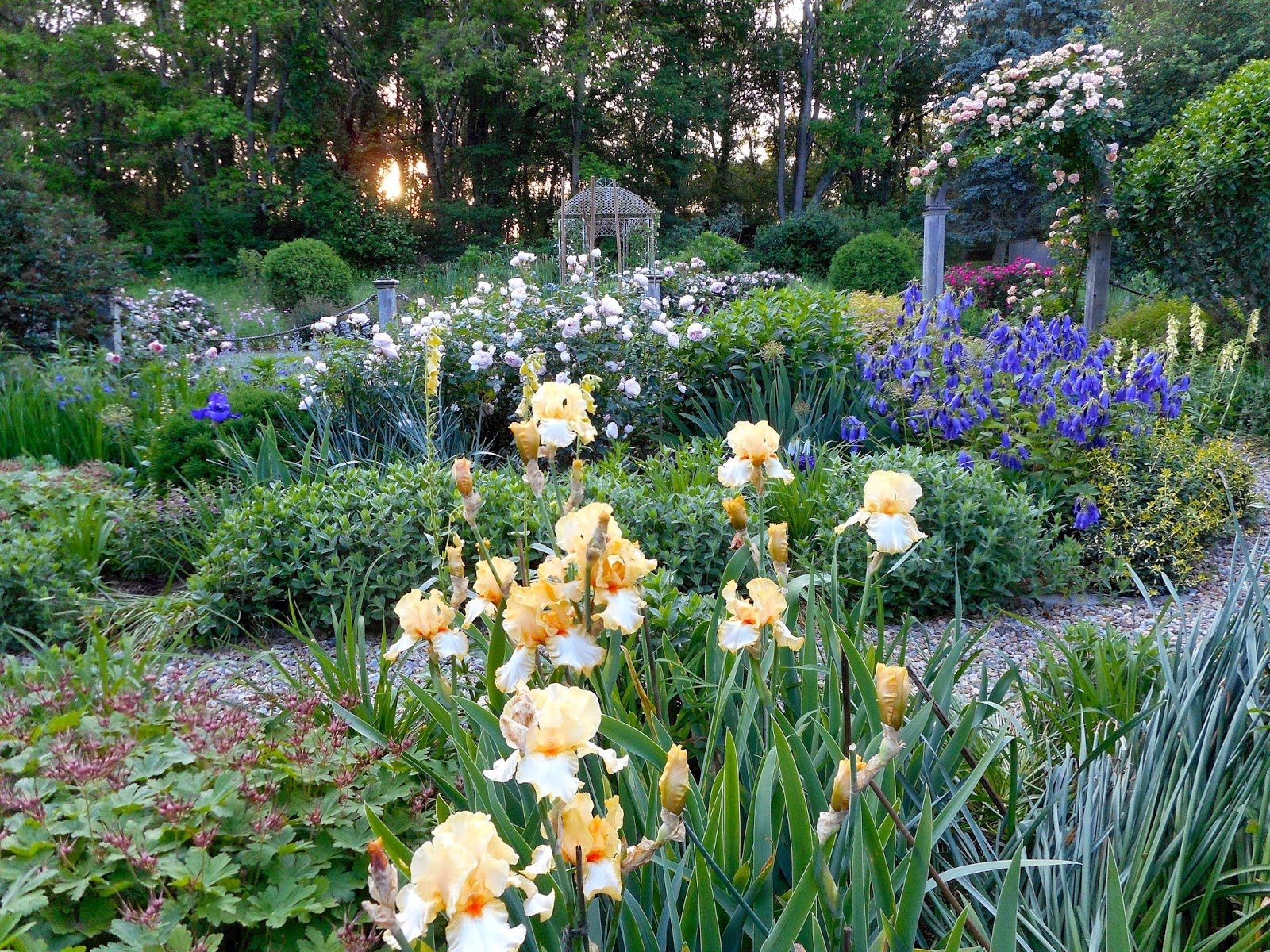September is usually one of my favorite months in the garden. Here in southern New England, Labor Day marks the end of summer's heat and humidity as the dog days give way to bright sunshine and cool nights. Japanese beetles and snails miraculously disappear and chores consist of little more than deadheading and staking top heavy asters and dahlias. This year, however, my blissful complacency has been marred by a family of groundhogs ravenously eating their way across my property. With the exception of deer, groundhogs (also known as woodchucks) are probably the most destructive mammalian pests a gardener can face. In short order a ground hog can reduce lush clumps of campanulas, echinaceas, asters and phlox to little more than a tangle of broken, leafless stems.
Luckily they don't seem to have a taste for the blue ageratum-like flowers of Eupatorium Coelestinum that blanket much of my Blue and White garden this time of year. Sadly though, the varmints devastated another section of this garden, leaving a an unsightly mess in their wake.
On the bright side, if their can be a bright side to this type of destruction, it was a section of the garden that has needed a facelift for a few years. This depressing sight was all the impetus I needed to get out my shovel and revamp the area. I redesigned the bed with plants that I hope will be unpalatable to groundhogs, including the Blue Mist Shrub (Caryopteris Clandonensis) pictured below.
There are a number of different varieties of Caryopteris available today all of which sport masses of petite pale to dark blue flowers. These small bushes bloom in late summer when most shrubs are past their prime and are prized for their airy display. They can be a bit temperamental and are known to succumb to harsh winters. Caryopteris prefer full sun and dry sandy soil. Like Butterfly bushes I don't prune them until their leaves begin to unfurl in late spring.
Luckily groundhogs eschew most tropical plants and they haven't touched the large clumps of coleus and cannas in my hot colored garden. I can't say the same for my Hot Papaya Echinaceas. I sorely miss their double, bright orange flowers, which in past years have added a sizzling pop of color to this garden.
Most of all I'm grateful that the groundhogs haven't touched my beloved dahlias. My late summer gardens wouldn't be the same without them.
And without their abundant blooms my vases would remain sadly empty this time of year.
There are many different autumn flowering anemones for sale today, but most have failed to perform well in my garden. Unlike its finicky cousins, Robustissima always puts on a terrific late summer show. Its tall flower laden stems require a bit of staking to keep them off the ground, but they're well worth the effort.
Sometimes I allow the stems to flop over, letting the flowers hide plants that have passed their prime. Try combining Anemone Robustissima with fall blooming Asters and Boltonias for a terrific late season display.
As for the groundhogs, no sprays or chemical deterrents have slowed their destructive rampage. In mid-August members of the Northeast Heather Society visited my gardens. They seemed to enjoy the tour despite the fact that my property is noticeably lacking in heaths and heathers. As we strolled my property, a few of us shared groundhog war stories. A seemingly mild-mannered women claimed that her husband had killed one by throwing an axe at its head.
I only wish my own knife throwing skills were equal to the task.



















































